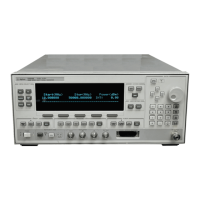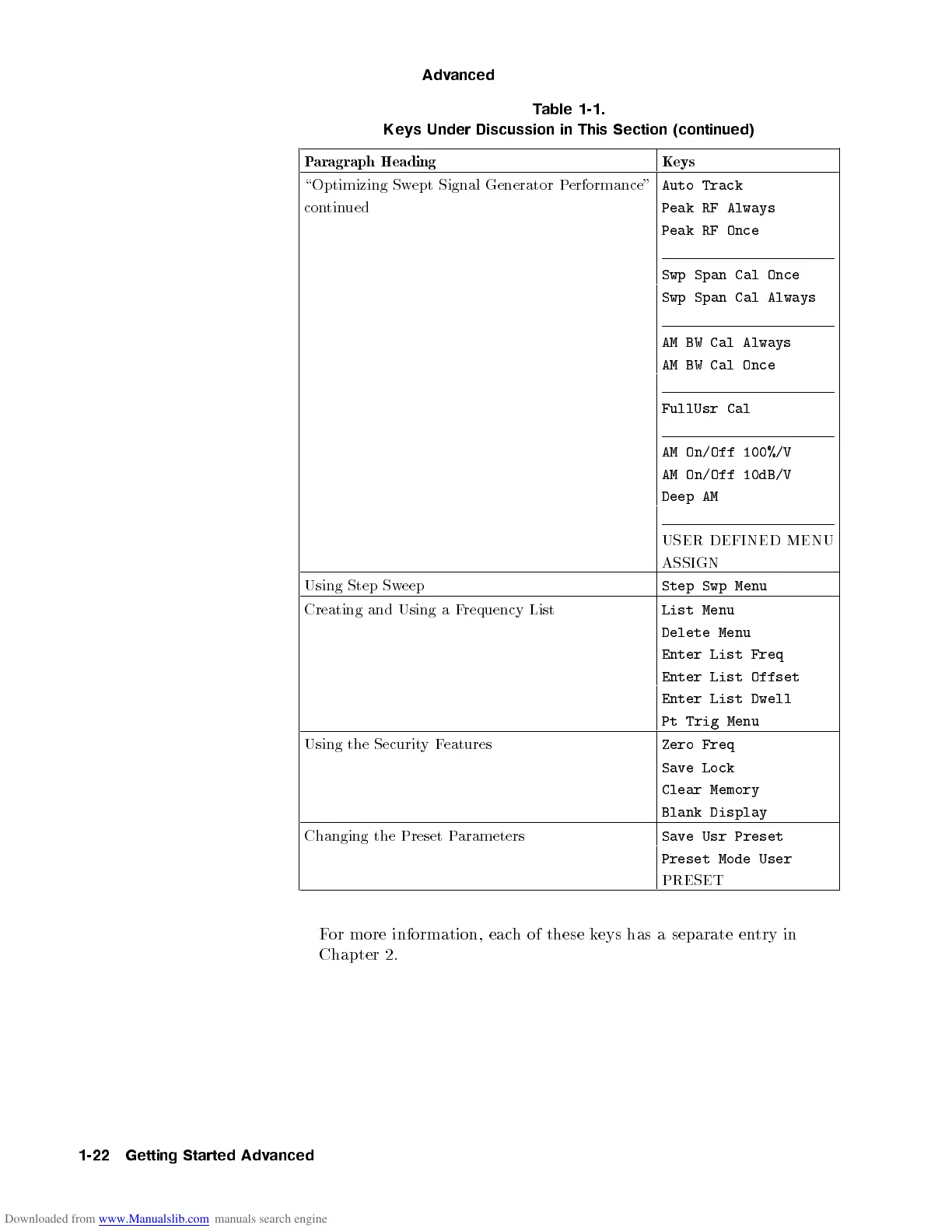

Do you have a question about the Agilent Technologies 83620B and is the answer not in the manual?
| Modulation | AM, FM, Pulse |
|---|---|
| Interface | GPIB |
| Sweep Time | 1 ms to 1000 s |
| Output Power | +13 dBm |
| Non-Harmonic Spurious | -60 dBc |
Details product warranty terms, including period, service, and limitations.
Explains the meaning of WARNING and CAUTION notes used throughout the manual.
Details crucial safety precautions regarding electrical shock and fuses.
Provides an overview of the chapter's content, divided into basic, advanced, and programming sections.
Provides a brief introduction to the instrument's capabilities.
Details how to perform CW operation using front panel keys.
Explains how to set start and stop frequencies for sweep operations.
Describes how to set and verify the output power level.
Explains how to set and verify the sweep time for various sweep types.
Explains how to use delta markers for frequency difference measurements.
Describes how to perform a power sweep and measure power output.
Explains how to compensate for frequency-dependent power variations.
Explains setups for external leveling using detectors, couplers, or splitters.
Details how to create and apply user flatness correction arrays for improved accuracy.
Introduces SCPI programming and the instrument's interface.
Defines key SCPI terms like controller, instrument, program message, response message, command, and query.
Shows examples of SCPI command syntax.
Introduces the basic types of messages exchanged between instruments and controllers.
Explains the hierarchical structure of SCPI subsystem commands.
Details the tabular format for documenting subsystem commands.
Explains how instruments interpret commands by parsing the command tree path.
Explains how to query instrument values and handle events.
Demonstrates how to create SCPI command set examples.
Illustrates the simplified syntax of a SCPI program message.
Shows the basic syntax of SCPI subsystem commands.
Depicts the syntax of common SCPI commands.
Explains the different types of parameters used in SCPI commands.
Describes how to specify physical quantities using extended numeric parameters.
Explains how to use discrete parameters for settings.
Details Boolean parameters representing true/false states.
Discusses various response data types and their formats.
Guides users on how to use interactive example programs for measurements.
Explains the generalized SCPI status register model structure.
Illustrates status register bit changes in a typical status group.
Provides a simplified view of the generalized SCPI trigger model.
Explains the decision rules inside each trigger state.
Illustrates the operation of the idle state.
Illustrates the operation of the initiate state.
Describes the operation of arbitrary event detection states.
Describes the simplest possible trigger configuration using INIT.
Defines keywords for trigger configurations like *ABORT, *IMMediate, etc.
Explains the ALC system as a feedback control for RF energy.
Stops sweeping and selects synthesized continuous wave.
Starts sweep at frequency of marker 1, stops at marker 2.
Sets sweep to manual mode using rotary or arrow keys.
Measures flatness correction values for all frequency points.
Measures flatness correction values for points with no assigned values.
Describes amplitude modulation from external or internal sources.
Selects SCPI as the interface language.
Allows saving up to eight front panel settings.
Lists common SCPI commands and their descriptions.
Sets the attenuator separately from the ALC system.
Sets frequency span for sweep operation.
Uncouples the attenuator from the ALC system.
Lists error messages displayed on the front panel.
Lists frequency range, resolution, and bands for CW signals.
Specifies frequency ranges for different models.
Details accuracy, step size, and dwell time for list mode.
Specifies accuracy for sweep widths and time.
Provides standard and option output power specifications.
Specifies flatness in dB for various power levels and frequencies.
Describes FM locked and unlocked modes, sensitivity.
Lists internal waveforms and parameters for AM/FM modulation.
Details pulse modes, period, width, and accuracy.
Instructions for inspecting the shipping container and contents for damage.
Guides on preparing the instrument for use.
Explains front panel softkey approach.
Details factory preset conditions for instrument operation.
Guides operators on performing quick checks of instrument functions.
Provides assurance that the generator is working via self-tests.
Details steps for verifying instrument status after power-on.
Guides through comprehensive checks including self-test and tracking.
Provides step-by-step instructions for replacing the line fuse.